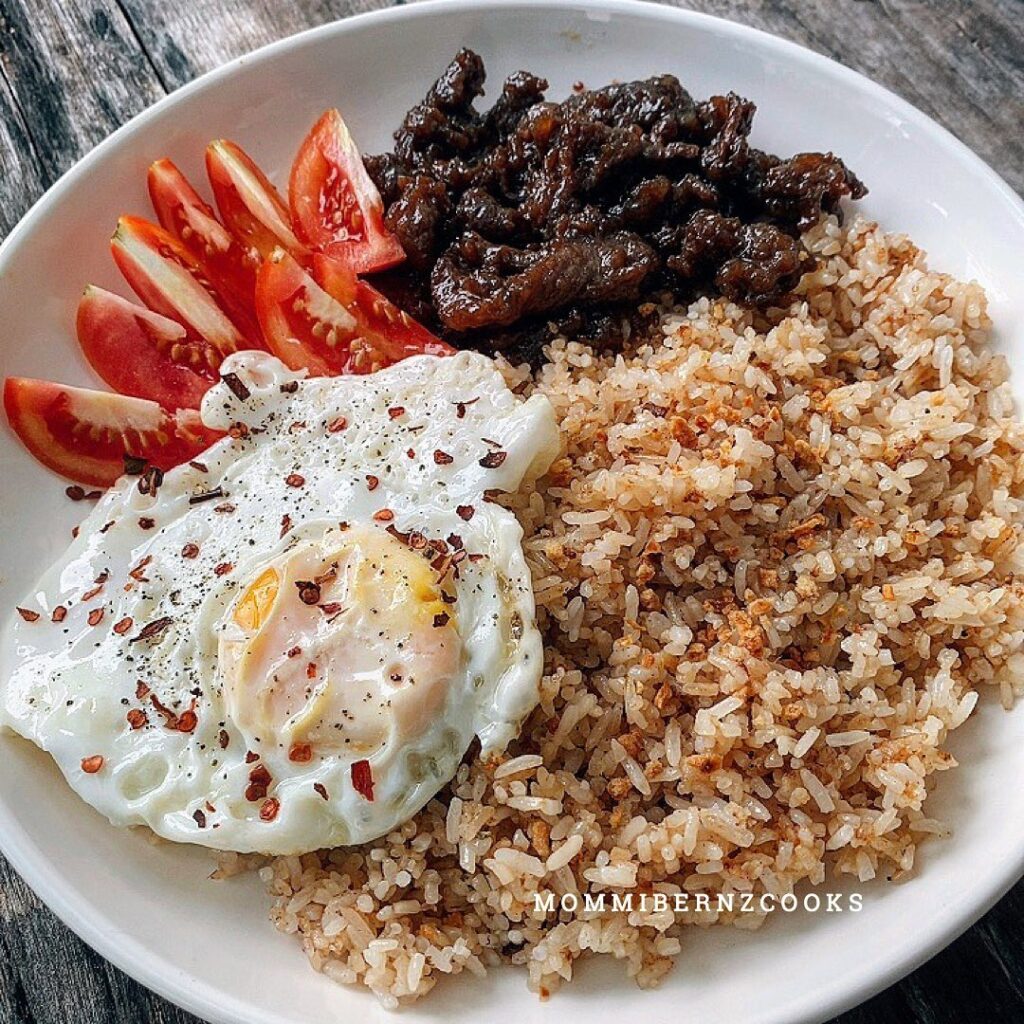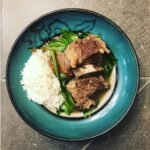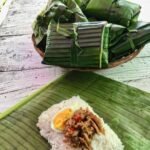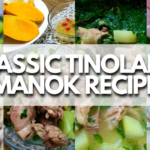The 18 Best Food To Eat in The Philippines (With Picture)

Filipino cuisine has recently been tagged as the ‘NEXT BIG THING to look out for in the culinary world. With the country’s variety of influences throughout its rich history, its traditional cooking techniques, and the Filipinos’ knack for combining flavours and making the most of any and all ingredients at their disposal, what results is unpretentious, no-frills food that’s simply delicious.
Here is the lists of best Filipino Food you need to taste before you die (lol) :
Adobo
First thing is our national food! It’s the Filipino dish everybody knows — the mighty adobo. It is made by stewing meat (usually chicken, pork, or a combination of both) in soy sauce and vinegar, adding peppercorns and bay leaves for that special flavour. Bonus leftovers tip: pull the meat from the bone and fry ’til crispy for some tasty adobo flakes.
< ADOBO RECIPE HERE >
Crispy Kare-Kare
This rich stew is made with peanut sauce and, customarily, oxtail, but other meatier cuts of beef can also be added in. Many Filipinos will consider kare-kare incomplete without a serving of bagoong (fermented seafood paste) on the side.
< CRISPY KARE KARE RECIPE HERE >
Lechon

One of the top contenders among the best Filipino dishes (alongside adobo) is perhaps the famous lechon. After all, it is hard to top a tasty, fully-roasted pig with perfectly crisp skin and juicy meat. Find the best of this sinful treat on the island of Cebu, but this is almost always served at any grand Pinoy gathering or fiesta.
< CRISPY BELLY-CHON RECIPE HERE >
Sinigang
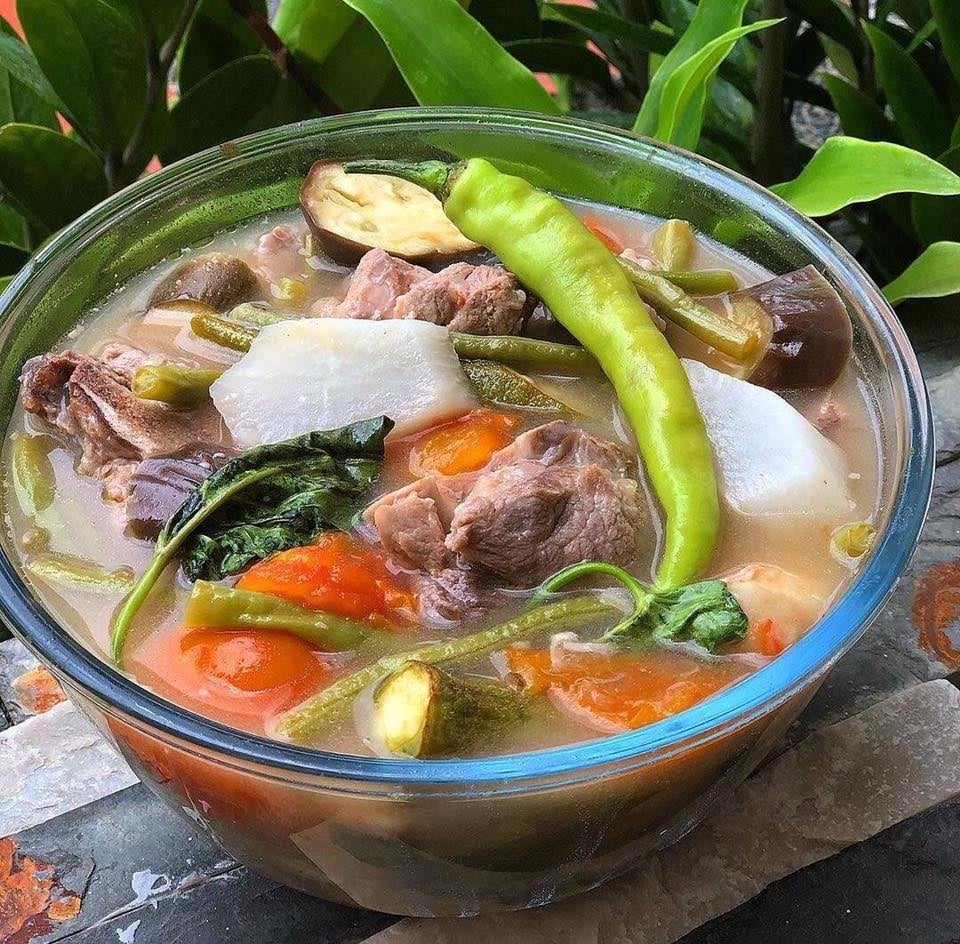
Sinigang is a Pinoy classic. A delicious sour broth usually made tangy by tamarind (sometimes kamias), it’s filled with different vegetables and a meat of choice. Popular variants include sinigang na baboy (pork), sinigang na hipon (shrimp), and sinigang na isda (fish).
Crispy Pata
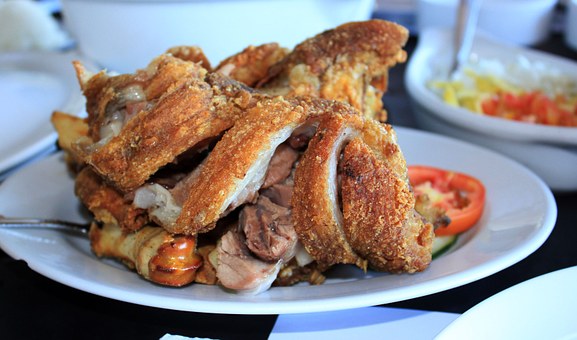
If you can’t get your hands on an entire lechon, a scrumptious crispy pata is an equally sinful alternative. It’s a dish that takes the entire pig leg and deep fries it to perfection. Serve with a soy-vinegar dipping sauce on the side with some chopped up garlic and chilli, and you’re on the road to your next favourite guilty pleasure.
Sisig
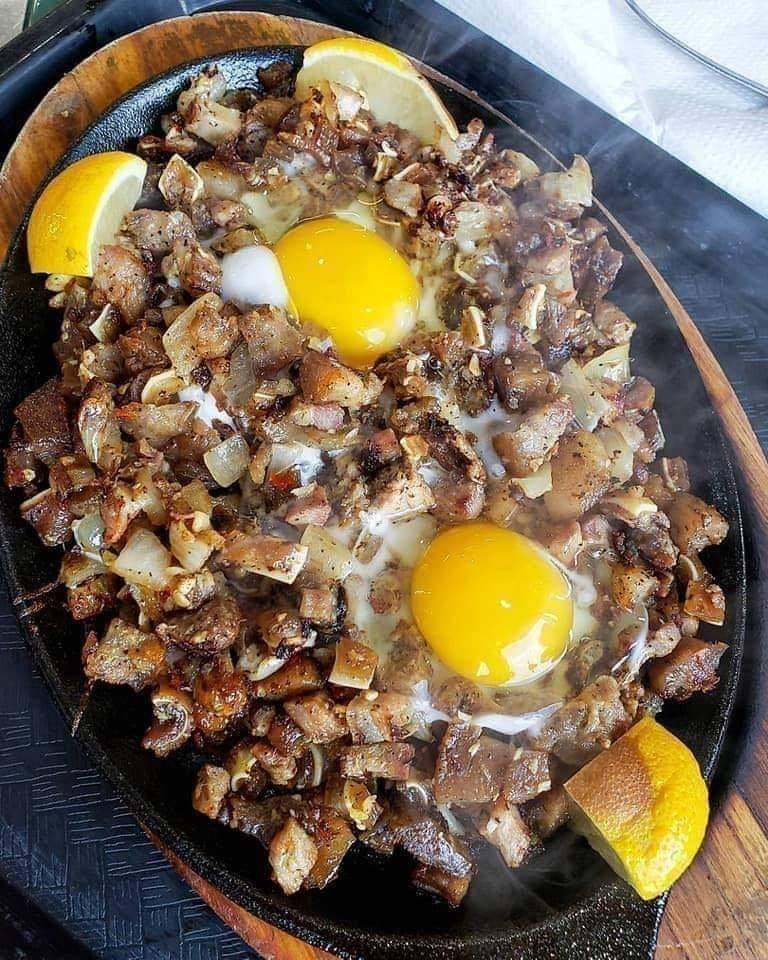
Served sizzling on a hot stone plate, sisig is a favorite pulutan (beer chow) among Filipinos. The meat is primarily chopped up parts of the pigs’ face — in the Philippines, no cut of the animal goes to waste. Some recipes use either mayonnaise or raw egg (to be mixed in while hot) to give it a creamier texture but the classic way is to incorporate pig’s brain into the dish.
< SIZZLING PORK SISIG RECIPE HERE >
Pancit Guisado

One of the more popular Filipino dishes among foreigners with Pinoy friends (due to its customary presence in Filipino birthday parties) is pancit (noodles), of which pancit guisado is perhaps the most well-known variant. This noodle dish is served as a symbol for long life, hence an essential at birthday feasts. The sautéed noodles are complemented by sliced vegetables and meat (all cooked in broth, soy sauce, and fish sauce) and kalamansi is squeezed over upon serving.
Bulalo

The perfect company for a cool, rainy day in the Philippines is a nice hot bowl of bulalo. This tasty soup is made by slow-cooking beef shanks and bone marrow (still in the bone) in some water with fish sauce, onions, and peppercorn, and later adding in some vegetables. Especially known for this dish is the province of Batangas in the country’s Southern Luzon region.
Pork Barbecue

A merienda (snack in between meals) favourite in the Philippines is Pinoy pork barbecue. While this skewered sweet meat goes wonderfully well with the ubiquitous plain rice during meals, there’s also nothing like catching yourself hungry in the middle of the afternoon and conveniently walking down the street over to the vendors grilling them road-side for only PHP15 ($0.30) a stick.
Palabok
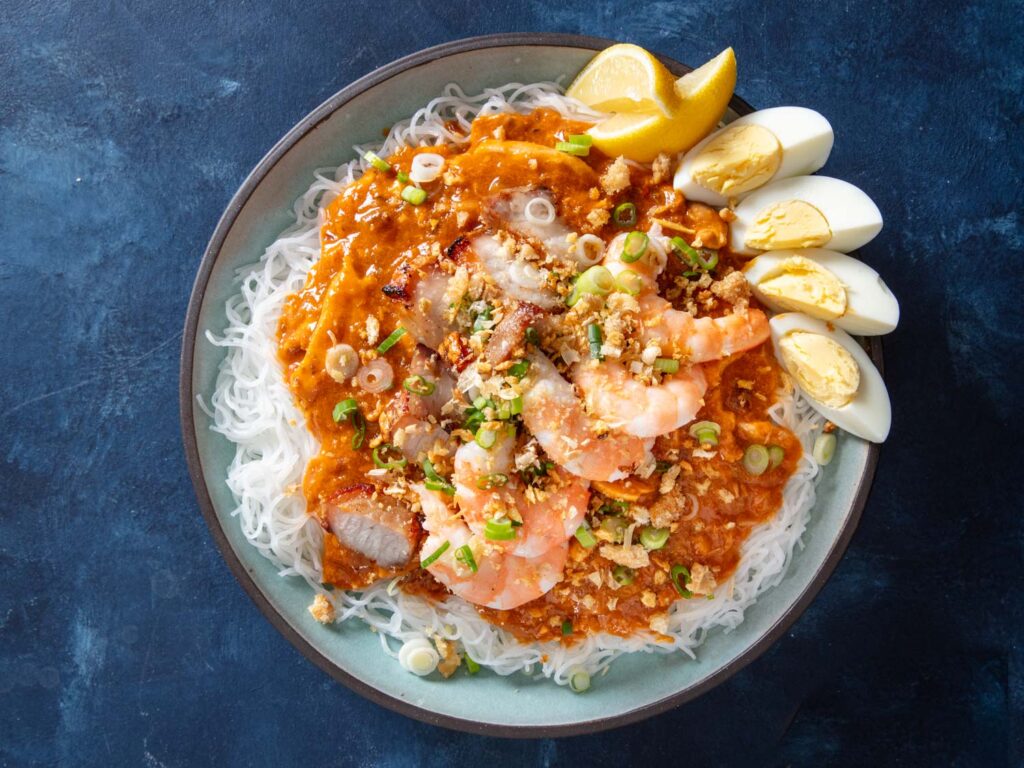
Vibrantly orange and jam-packed with different textures and flavours, palabok is another well-loved way of cooking pancit. It is mixed in with a shrimp sauce, which gets its recognisable colour from annatto powder. It is finished off with a variety of toppings such as slices of hard-boiled eggs, crushed chicharon (pork rinds), tinapa (smoked fish) flakes, and spring onions.
Filipino breakfast dishes (‘silog’)
A hearty Filipino breakfast typically consists of meat, sinangag (garlic fried rice), and itlog (egg). Each dish name varies slightly depending on the meat that goes with the rice and egg. So for example, a plate of tapa (cured beef), sinangag, and itlog, is called tapsilog. A plate including tocino (sweet cured pork) instead of tapa is called tocilog. While one that uses longganisa (sausages) is known as longsilog. These generous breakfast servings are a great way to kickstart a day.
Fried Lumpia
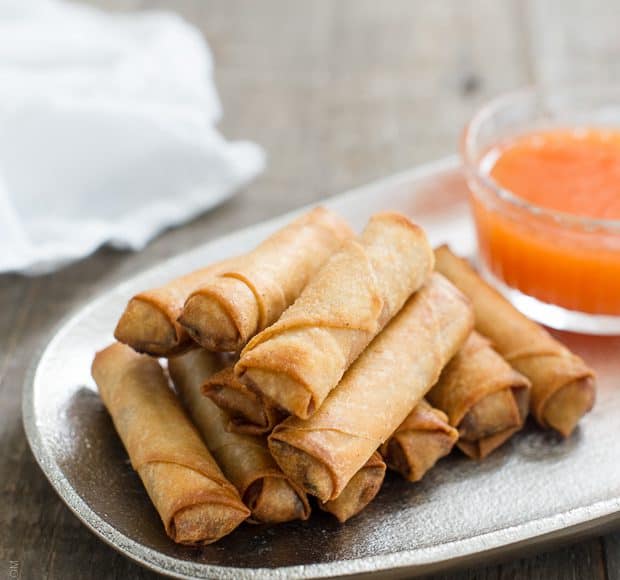
Another dish frequently expected to make an appearance at Filipino gatherings is the Pinoy’s version of the egg roll, lumpia. These deep-fried rolls are filled with minced meat and vegetables and served with a sweet and sour dipping sauce. Being so easy to make, lumpia is almost automatically part of a Filipino feast when food for the large Filipino family has to be cooked in copious amounts.
Dinuguan

Another Filipino stew, albeit a more eccentric one, is the dark-tinted dinuguan. It’s made by cooking pork and innards in pig’s blood and vinegar. It’s often eaten with puto, a slightly sweet steamed rice cake, which complements its savoury taste.
Inihaw na Liempo

Inihaw na liempo or grilled pork belly is juicy cuts of perhaps the tastiest part of the pig, marinated and grilled, basting the meat as it cooks. Depending on the desired taste, a typical liempo marinade can be a mixture of any of the following: soy sauce, fish sauce, banana ketchup, garlic, kalamansi, brown sugar, salt, and pepper. Eat with your hands, your sawsawan (dipping sauce) of choice, and a generous serving of plain rice — perfect.
Chicken Inasal

This flavourful grilled chicken, the best of which is made in the city of Bacolod, sits in a special marinade of vinegar, kalamansi, ginger, and lemongrass. It owes its appetising golden-brown colour to annatto oil, which is also poured over the plain rice it is served with. Dip the chicken in sinamak (spiced vinegar) for some extra zest.
Kilawin

Kilawin, also called kinilaw, is the Filipino ceviche. Seafood is often used, such as tuna and tanigue, which is then cured in vinegar and kalamansi. Onions are usually added in, as well as some chilli for a more complex blend of flavours. Kilawin is normally served as an appetiser or as pulutan (beer chow) when drinking.
Arroz Caldo
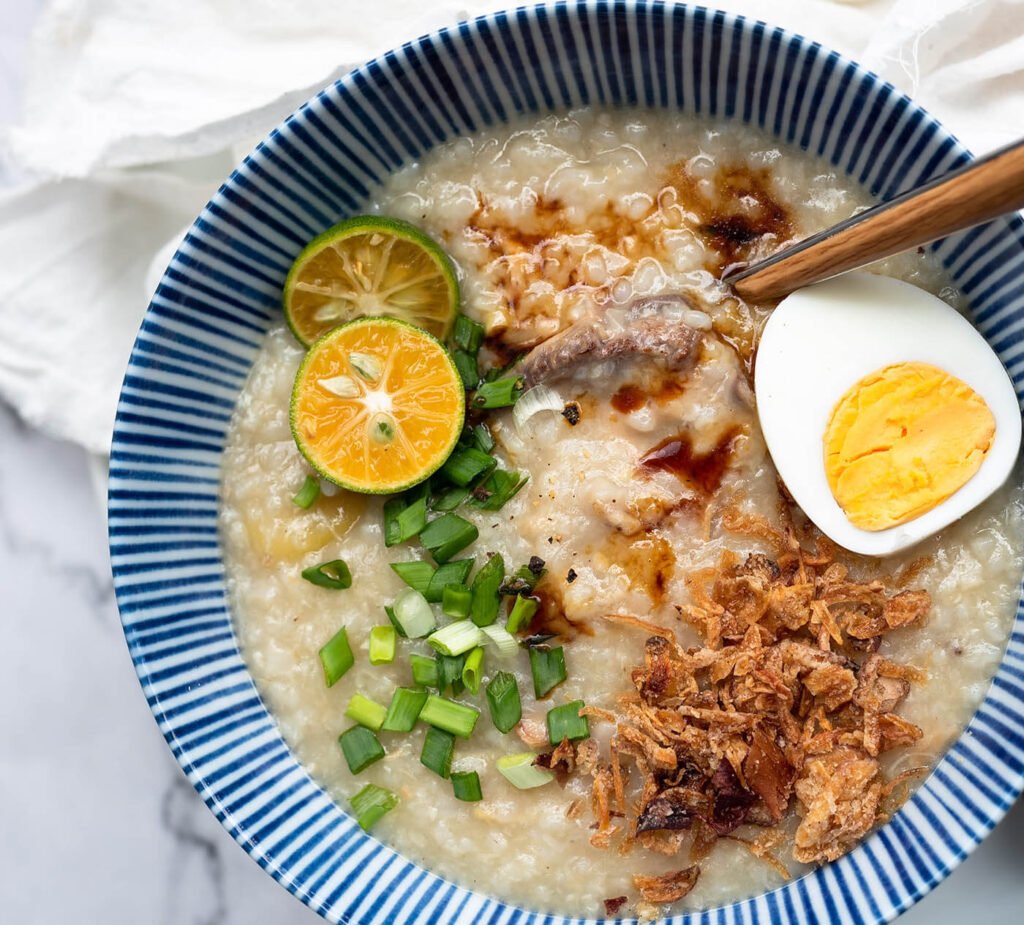
Frequently eaten at breakfast and merienda, arroz caldo is a rice porridge, taking its flavours from ginger, garlic, onions, and a tasty broth. Cuts of chicken and hard-boiled eggs are also added in and individual servings are finished off with fried garlic bits, chopped green onions, and a drizzle of kalamansi.
Lechon Kawali

Though not everybody has access to a backyard and a space to charcoal roast an entire pig, there’s still a way to enjoy the guilt-inducing goodness of lechon — by cooking it in a kawali (wok). Pork belly is cooked in boiling water (usually with bay leaves, peppercorn, and salt) until tender, air-dried, given a salt rub, and deep fried until golden brown. The aim is perfect crackling skin and tender meat. Enjoy with lechon gravy or spiced vinegar.






